Abstract
OBJECTIVES--Sick building syndrome (SBS) involves symptoms such as irritation to the eyes, skin, and upper airways, headache, and fatigue. The relations between such symptoms and both personal and environmental factors were studied in 225 female hospital workers, working in eight hospital units in the south of Sweden. METHODS--Symptoms of SBS and personal factors were measured by means of a standardised self administered questionnaire. The technical investigation comprised a building survey and measurements of room temperature, supply air temperature, air humidity, and exhaust air flow. RESULTS--The prevalence of symptoms differed from one unit to another. The mean value of weekly complaints of fatigue was 30%, of eye irritation 23%, and of dry facial skin 34%. Eye irritation was related to work stress, self reported exposure to static electricity, and was also more common in buildings with a high ventilation flow and a high noise level (55 dB(A)) from the ventilation system. Nasal symptoms were related to asthma and hay fever only. Throat symptoms were more common in smokers, subjects with asthma or hay fever, new buildings, and in buildings with a high ventilation flow. Facial skin irritation was related to a lack of control of the work conditions, and was more common in new buildings, and buildings with a high ventilation flow and ventilation noise. General symptoms, such as headache and fatigue, were related to current smoking, asthma or hay fever, work dissatisfaction, and static electricity. CONCLUSION--As the prevalence of symptoms was high, there is a need to improve the indoor environment as well as the psychosocial environment in hospitals. These improvements could include a reduction of ventilation noise, minimised smoking, and improvements in the psychosocial climate. Further research is needed to identify indoor climatic factors that cause the increased prevalence of symptoms of SBS in new buildings.
Full text
PDF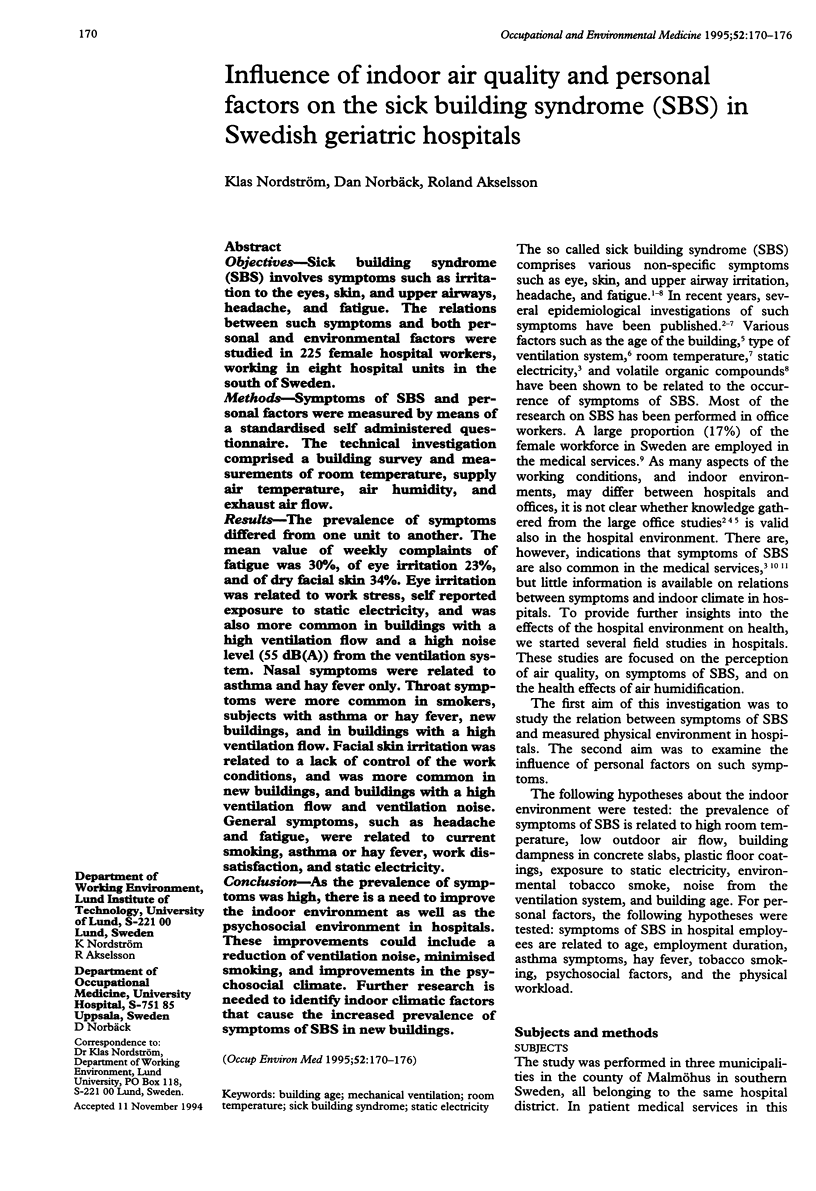
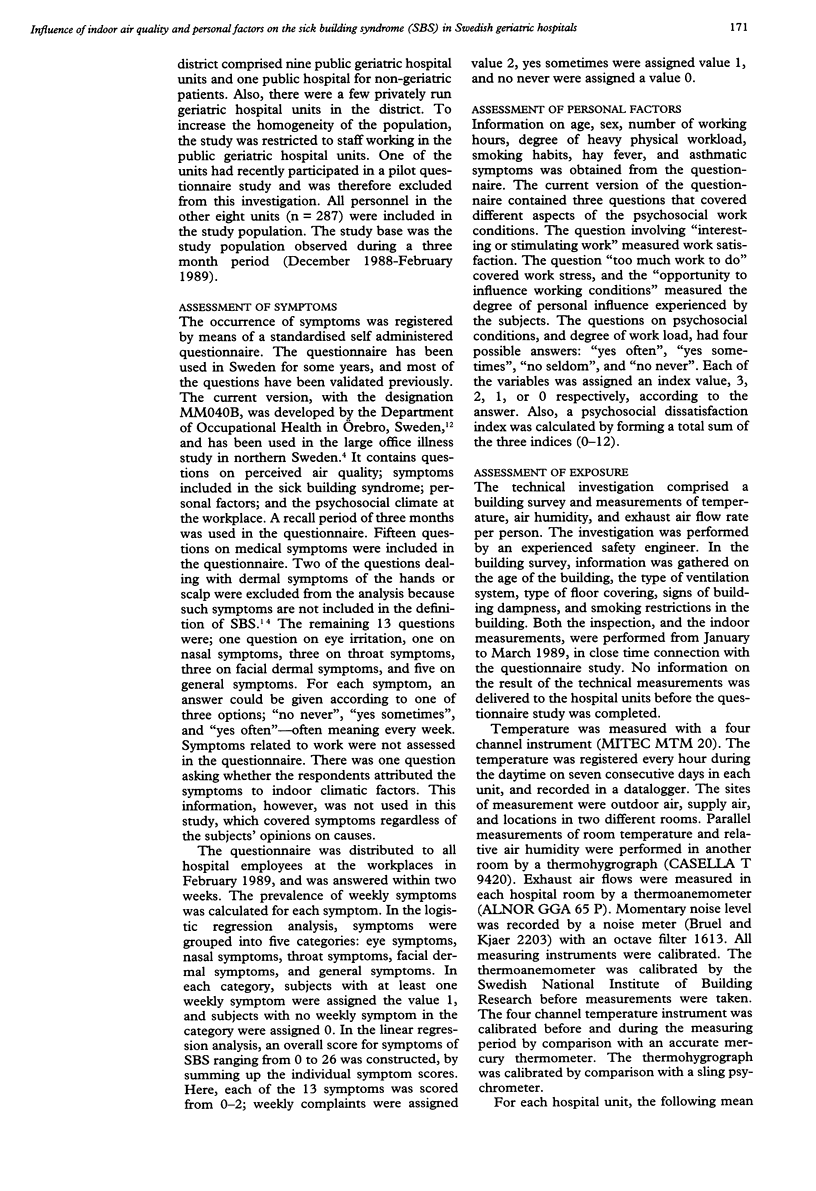
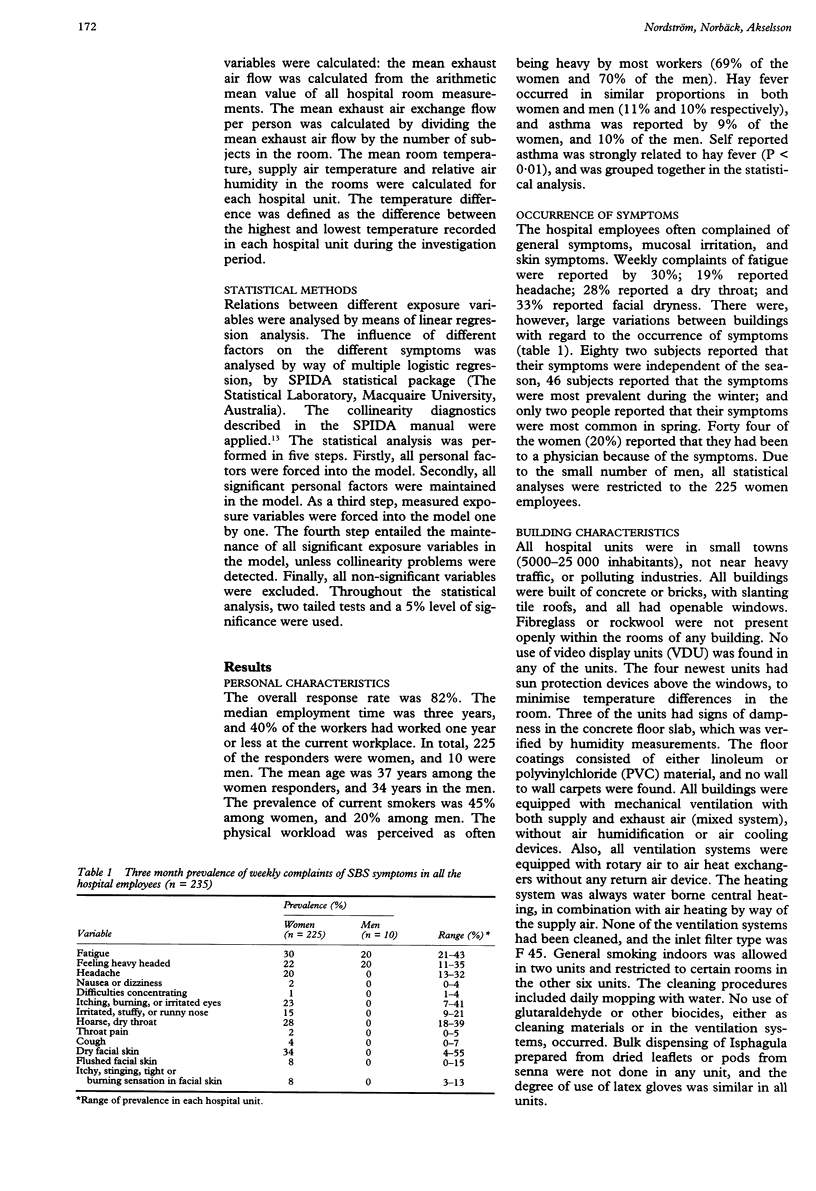
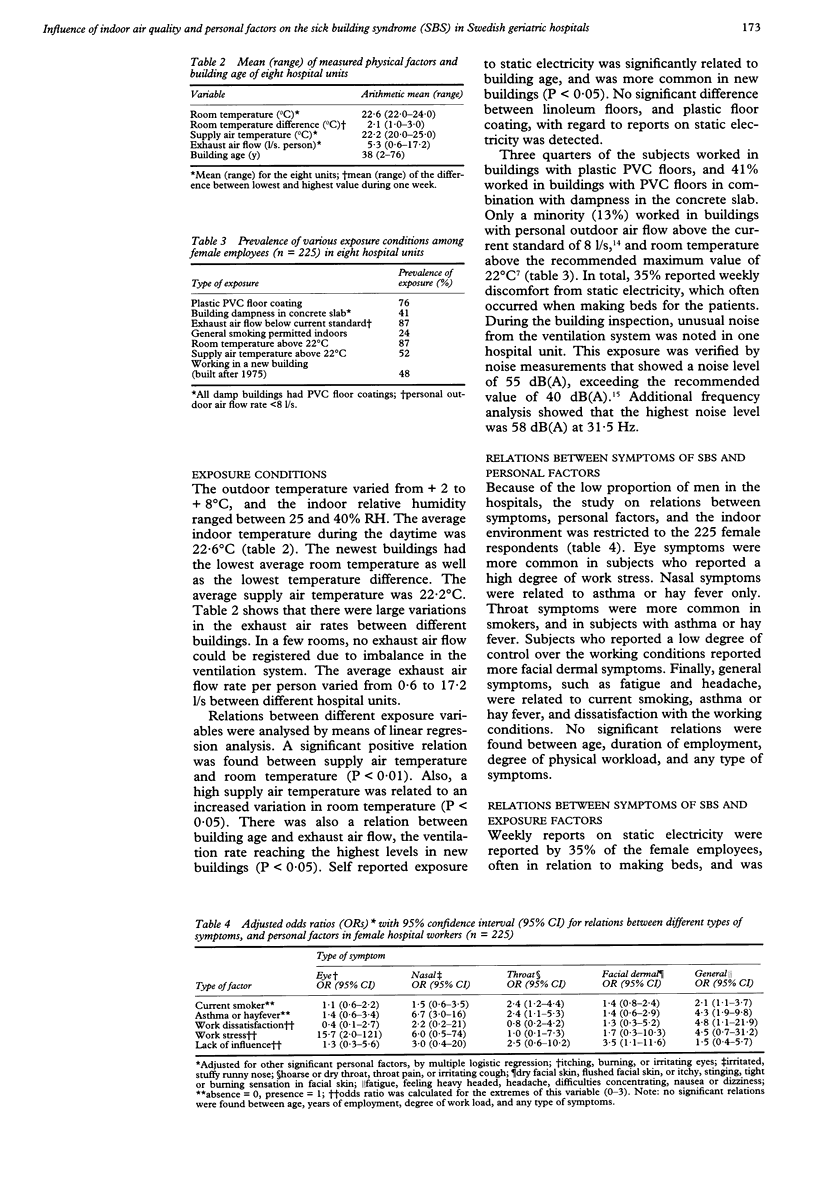
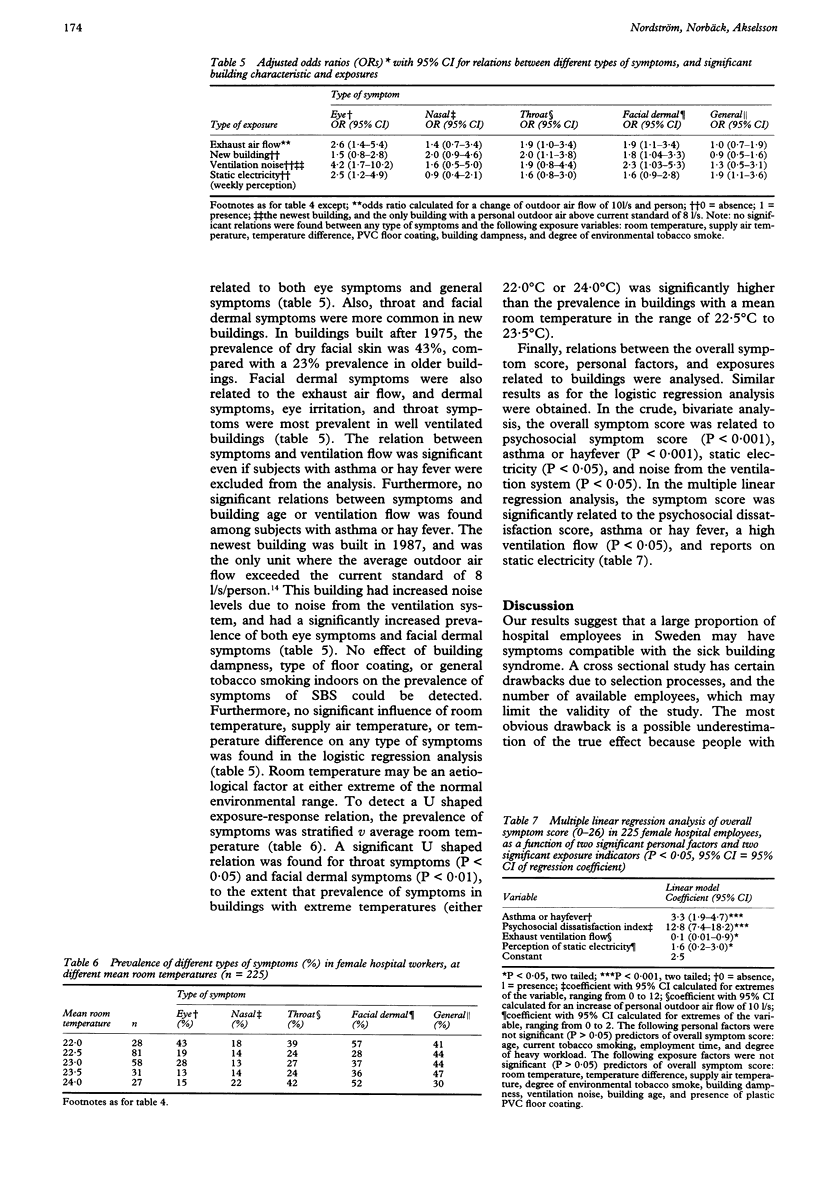
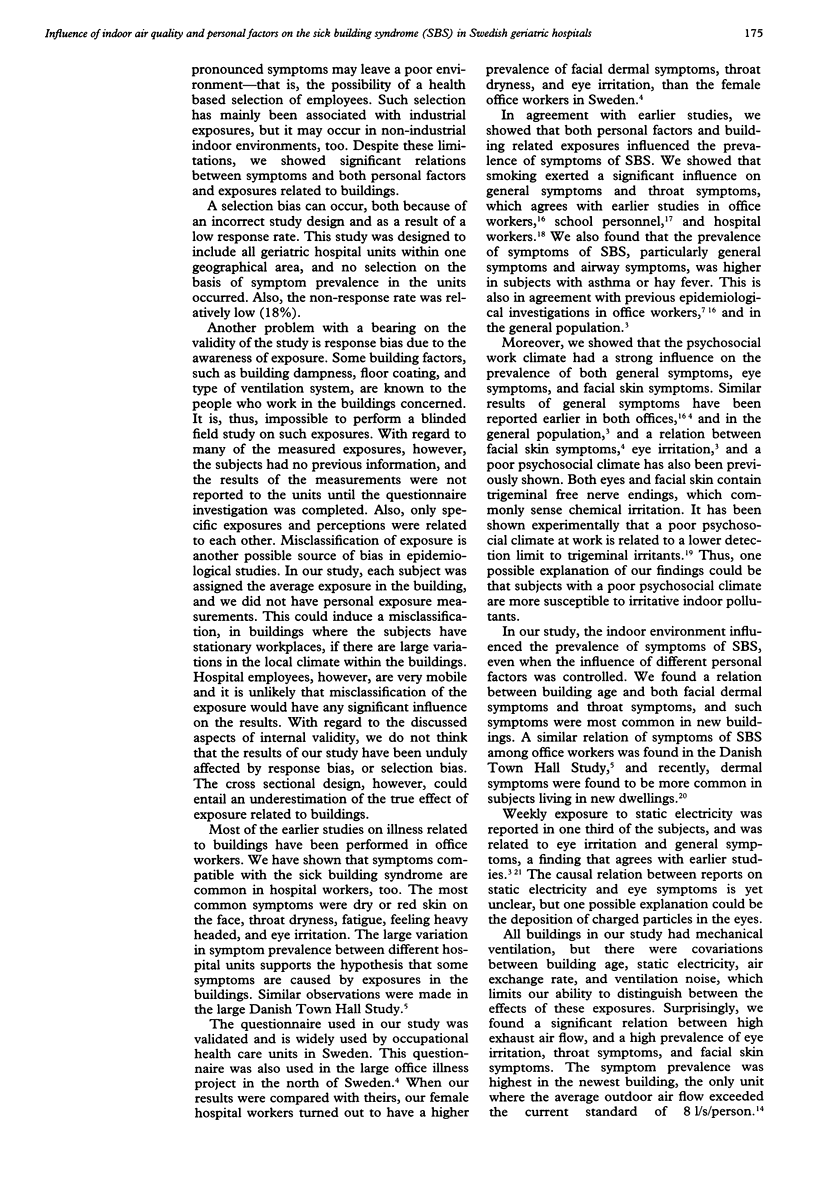
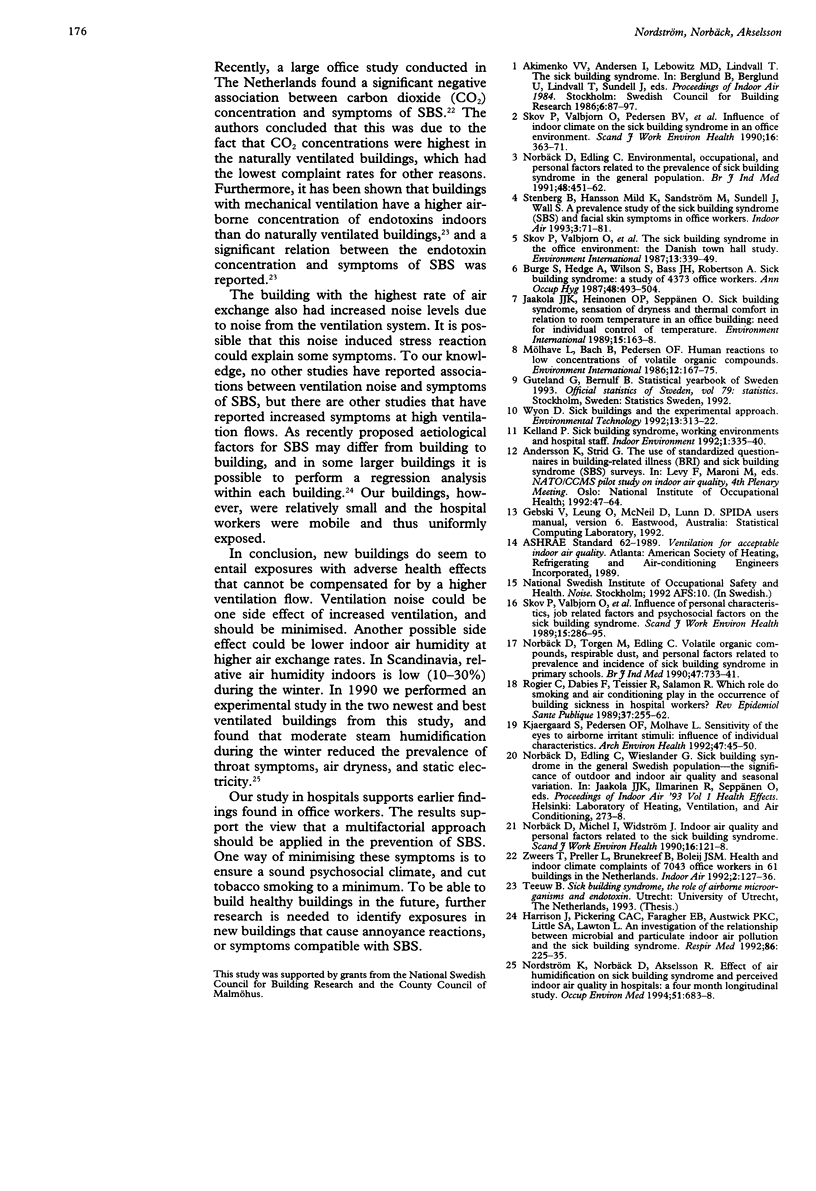
Selected References
These references are in PubMed. This may not be the complete list of references from this article.
- Burge S., Hedge A., Wilson S., Bass J. H., Robertson A. Sick building syndrome: a study of 4373 office workers. Ann Occup Hyg. 1987;31(4A):493–504. doi: 10.1093/annhyg/31.4a.493. [DOI] [PubMed] [Google Scholar]
- Harrison J., Pickering C. A., Faragher E. B., Austwick P. K., Little S. A., Lawton L. An investigation of the relationship between microbial and particulate indoor air pollution and the sick building syndrome. Respir Med. 1992 May;86(3):225–235. doi: 10.1016/s0954-6111(06)80060-0. [DOI] [PubMed] [Google Scholar]
- Kjaergaard S., Pedersen O. F., Mølhave L. Sensitivity of the eyes to airborne irritant stimuli: influence of individual characteristics. Arch Environ Health. 1992 Jan-Feb;47(1):45–50. doi: 10.1080/00039896.1992.9935943. [DOI] [PubMed] [Google Scholar]
- Norbäck D., Edling C. Environmental, occupational, and personal factors related to the prevalence of sick building syndrome in the general population. Br J Ind Med. 1991 Jul;48(7):451–462. doi: 10.1136/oem.48.7.451. [DOI] [PMC free article] [PubMed] [Google Scholar]
- Norbäck D., Michel I., Widström J. Indoor air quality and personal factors related to the sick building syndrome. Scand J Work Environ Health. 1990 Apr;16(2):121–128. doi: 10.5271/sjweh.1808. [DOI] [PubMed] [Google Scholar]
- Norbäck D., Torgén M., Edling C. Volatile organic compounds, respirable dust, and personal factors related to prevalence and incidence of sick building syndrome in primary schools. Br J Ind Med. 1990 Nov;47(11):733–741. doi: 10.1136/oem.47.11.733. [DOI] [PMC free article] [PubMed] [Google Scholar]
- Nordström K., Norbäck D., Akselsson R. Effect of air humidification on the sick building syndrome and perceived indoor air quality in hospitals: a four month longitudinal study. Occup Environ Med. 1994 Oct;51(10):683–688. doi: 10.1136/oem.51.10.683. [DOI] [PMC free article] [PubMed] [Google Scholar]
- Rogier C., Dabis F., Teissier J. F., Salamon R. Quel rôle jouent le tabagisme et la climatisation dans la survenue de symptômes oto-rhino-laryngologiques et respiratoires hauts chez le personnel d'un centre hospitalier? Rev Epidemiol Sante Publique. 1989;37(3):255–262. [PubMed] [Google Scholar]
- Skov P., Valbjørn O., Pedersen B. V. Influence of indoor climate on the sick building syndrome in an office environment. The Danish Indoor Climate Study Group. Scand J Work Environ Health. 1990 Oct;16(5):363–371. doi: 10.5271/sjweh.1772. [DOI] [PubMed] [Google Scholar]
- Skov P., Valbjørn O., Pedersen B. V. Influence of personal characteristics, job-related factors and psychosocial factors on the sick building syndrome. Danish Indoor Climate Study Group. Scand J Work Environ Health. 1989 Aug;15(4):286–295. doi: 10.5271/sjweh.1851. [DOI] [PubMed] [Google Scholar]


